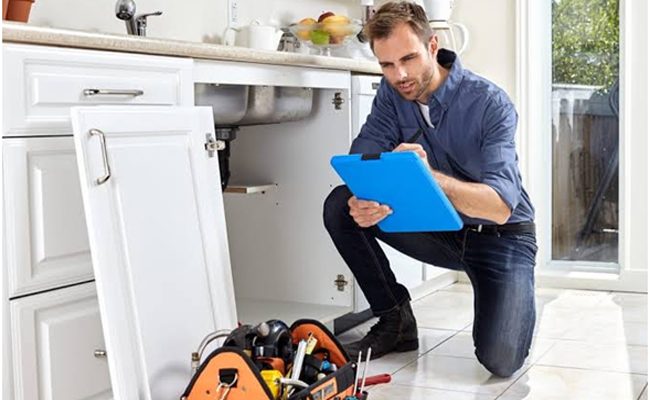
Foundation repair and practices have come a long way over the years. Innovations in this field have been vast and impressive, from crude techniques used to alleviate basic problems to sophisticated methods that can address even the most complex issues. The roots of foundation repair trace back centuries; however, it wasn’t until relatively recently that various methods began to be employed more widely and with greater success. Improvements in technology have enabled more precise repairs while also allowing contractors to work faster and with less disruption to the surrounding area. As such, homeowners now have access to previously unavailable solutions or couldn’t yield satisfactory results.
Looking back:
The foundation is one of the most important aspects of any house, as it provides structural stability and prevents potential damage from floods, earthquakes, or other natural disasters. The history of foundation construction dates back to ancient times when the Egyptians built their great pyramids on massive stone foundations. This foundation was strong enough to withstand centuries of wear and tear without significant damage. Over time, methods and materials used for foundation building have evolved into a more sophisticated form.
The first use of concrete for foundations can be traced back to 1824 in France when Joseph Monier patented a method for reinforcing masonry walls with iron rods embedded in concrete mortar. This invention revolutionized how foundations were constructed and eventually spread throughout Europe and North America. In the late 1800s, new techniques emerged that allowed deeper foundations, such as caissons and piles. This enabled houses to be built on unstable grounds and withstand the pressures of natural disasters like earthquakes.
By the early 1900s, concrete block was used in many parts of the world to create strong and durable foundations. The reinforcing bars further increased strength and stability while reducing costs associated with foundation building. Furthermore, different foundation walls began to emerge, with some incorporating steel beams or leveraging wedge-shaped footings to increase support.
Read Article: Home Remodeling: Is Remodeling Your Basement A Worthy Investment?
Today, a large variety of foundation options are available depending on geography and soil conditions in any given area. For instance, waterproof membranes are often incorporated into foundations in areas susceptible to flooding to help prevent water damage. Similarly, shear walls and anchor bolts are used in areas prone to earthquakes to secure the foundation better and ensure stability when seismic activities occur.
Over time, the methods used for foundation repair have also evolved. While in the past, homeowners would turn to DIY approaches such as replacing broken bricks or pouring a layer of concrete over an existing one, modern contractors rely on sophisticated equipment and materials to assess and fix any structural issues with a building’s foundation. This includes using polyurethane foam injections to fill in cracks or helical piles that provide additional support without damaging a structure’s integrity.
Understanding the modern methods:
Modern foundation repair methods are much more advanced and effective than ever before. Using sophisticated equipment, materials, and techniques allows contractors to diagnose and fix any structural issues with a building’s foundation quickly and efficiently.
One of the most common modern methods for foundation repair is slabjacking. Slabjacking is a process where holes are drilled into the concrete slab, and grout is injected underneath it to fill voids or cracks to lift the slab back into its original position. This method can be used on residential and commercial properties as long as the soil underneath has been properly compacted. This technique provides a cost-effective way to restore a foundation’s stability while preventing further damage.
Another popular method for foundation repair is the installation of helical piles. Helical piles are steel shafts screwed into the ground to support and stabilize a structure’s foundation. They can be used in areas with low bearing capacity or where traditional foundations cannot be built due to environmental issues. The number of helical piles needed depends on the size and weight of the building. Still, they can offer up to 50 times greater strength than a concrete footing and provide an easy solution for correcting any structural problems effectively.
Polyurethane foam injections are becoming increasingly popular to fill voids or cracks between concrete slabs or under existing foundations. This type of repair is considered a non-invasive procedure that does not require heavy machinery or extensive excavation. Instead, contractors inject foam material into the voids, which expands and hardens to fill any spaces between the concrete. This method can help reduce water penetration and reinforce existing foundations without causing further damage or disruption to the area.
Finally, there are also methods for foundation repair that involve the installation of steel piers or underpinning systems. Steel piers are driven deep into the ground with hydraulic force, supporting and stabilizing a structure’s foundation. On the other hand, underpinning systems involve placing additional layers of reinforcing materials underneath an existing foundation to increase its strength and stability. Both these options can be used to correct problems such as sinking, shifting, and settling.
The Summary
Modern methods for foundation repair are much more effective and efficient than ever before. By understanding the various techniques and materials available, homeowners can be sure that their structure is safe, secure, and prepared for any unforeseen events in the future. Foundation repairs can also increase the value of a property if carried out correctly by experienced professionals. With the right approaches and enough knowledge, any homeowner can rest assured knowing their building’s integrity will remain intact for years to come.
Leave a Reply